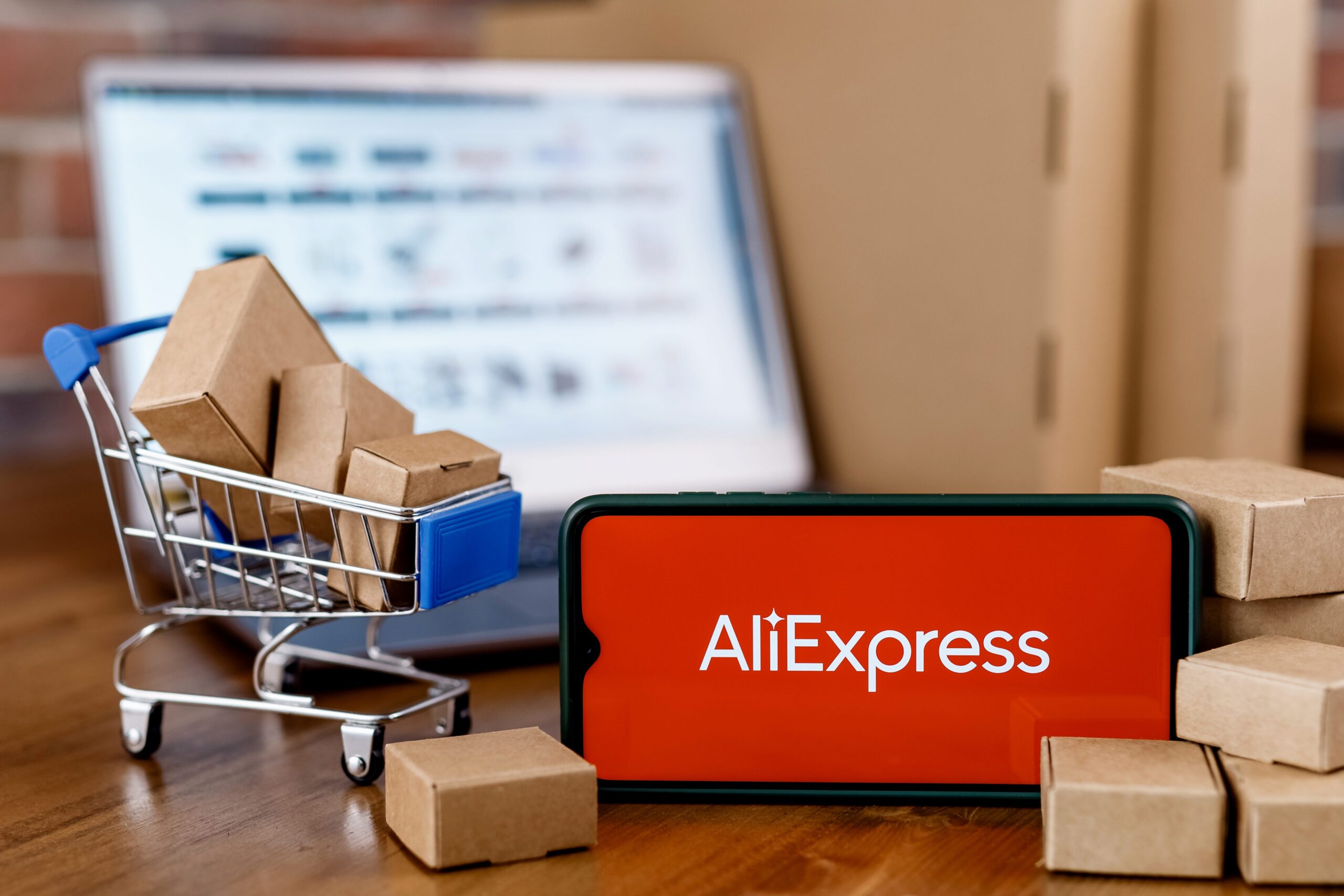🔥Sell Right Now |5 Best Christmas Products To Sell in Aliexpress – Trending Product Research In 2022

5 Christmas Dropshipping Gems or Fool’s Gold? A Critical Review of “🔥Sell Right Now | 5 Best Christmas Products To Sell in Aliexpress – Trending Product Research In 2022”
Introduction
Dropshipping Christmas products 2022 is a phrase that keeps echoing across e-commerce forums, Discord groups and TikTok micro-lessons—and it is exactly the keyword that the “Winning Products” channel seeks to dominate. In the four-minute video “🔥Sell Right Now | 5 Best Christmas Products To Sell in Aliexpress – Trending Product Research In 2022,” the host compresses five supposedly untapped Q4 items, a quick tool pitch and a basic shipping disclaimer into 231 seconds of screen recording. At first glance, the content feels like a handy crib sheet for beginner sellers; yet a deeper look raises crucial questions about market saturation, logistical feasibility and ethical sourcing. This article dissects the video scene by scene, evaluates each product with current market data and offers an advanced playbook for entrepreneurs who refuse to operate on hype alone.
The Video at a Glance
Production and Delivery
The production is minimalist: PowerPoint-style cards naming the product, a muted background track, and automatic slide transitions. There is no voice-over, making the pace feel both fast and impersonal. While the lack of narration allows for universal accessibility, it also deprives viewers of nuanced commentary—especially relevant when you must evaluate competition, CPM or fulfillment risk.
Core Promise
The channel pledges to identify “non-saturated hot products” for mass-market scaling, a tall order in an era when DSers and AliHunter scrape sales metrics in real time. We will scrutinize whether the five products actually meet the “non-saturated” criterion or merely recycle last year’s catalog.
Highlight: The video interlaces product showcases with affiliate plugs (iXSpy, iXBrowser, AliExpress Analyzer). Transparency is minimal—no ROI case study, no sales screenshots—yet affiliate codes are clearly monetized.
Product-by-Product Evaluation
1. 5D Embossed Christmas Nail Art Stickers
The micro-niche of nail art surged on TikTok, peaking at 1.4 B views under #ChristmasNails in December 2021. AliExpress shows over 960 orders for the featured SKU, a modest figure compared to the 10 K+ order thresholds typical of viral winners. Upside? An ultra-lightweight item costing <$1 ex-factory, enabling low shipping costs via Cainiao. Downside? Application complexity means high refund risk and the need for UGC tutorials, which the video does not address.
2. Christmas LED Fairy Lights (Gift Packaging)
Google Trends reveals a recurring spike for “fairy lights” every November, but CPCs on Facebook ads often exceed $1.10 in Tier-1 geos. The suggested variant—mini string lights inside mason-jar-style packaging—helps differentiation, yet battery-powered electronics face CE/FCC compliance hurdles. The video glosses over this legality, risky for new sellers unaware of import documentation.
3. Window Paste Stickers Merry Christmas
Search saturation is evident: Amazon lists 1 000+ near-identical SKUs under “Christmas window clings.” Margin pressure is stiff; on Amazon they retail at $6.99 with Prime shipping. Unless you bundle with an installation scraper or AR app integration, your brand equity is negligible. The video’s “sell right now” tone omits those harsh economics.
4. Knitted Alphabet Stockings (A–Z)
Personalization is a legitimate moat. Having 26 letter variants invites upsells for family packs, but inventory complexity skyrockets. AliExpress suppliers rarely guarantee all letters in peak season. Without negotiating reserved stock, a merchant risks partial-order cancellations—fatal for Shopify store reputation.
5. Santa Claus Cushion Covers
Cushion covers ride the “decorative soft goods” wave that sees 85 % revenue between late October and mid-December. However, 45 cm x 45 cm covers push shipping from epacket (<10 g) to standard parcel (>100 g), increasing per-unit freight by up to 300 %. POD alternatives via Printful in local warehouses might yield faster shipping but compress gross margin to 15 % or below—again absent from the video’s analysis.
Insight: Four of five items are home décor, exposing the list to the same seasonality curve. Portfolio-level risk hedging is not discussed in the original content.
Comparative Snapshot of the Five Products
| Product | Potential Gross Margin* | Operational Red Flag |
|---|---|---|
| 5D Nail Stickers | ≈ 70 % | High refund risk due to skill gap |
| LED Fairy Lights | ≈ 55 % | Battery shipping + compliance |
| Window Stickers | ≈ 50 % | Highly commoditized |
| Alphabet Stockings | ≈ 60 % | Inventory fragmentation (26 SKUs) |
| Cushion Covers | ≈ 40 % | Bulky, slow shipping |
*Assuming 3× markup and average $5 CAC.
Market Timing and Seasonality Imperatives
Shipping Cut-off Calendar
AliExpress Standard Shipping to the US advertises 15–20 days in Q3 but swells to 25–40 days post-Singles’ Day (11.11). Any Christmas product promoted after November 25 risks delivery in January—a customer-service nightmare. The video includes a brief “⚠️ check shipping time” note, but no granular timeline. Experienced sellers build “last acceptable order date” dashboards, often using Aftership analytics integrated with carrier on-time performance deltas.
Omnichannel Fulfillment Backup
A savvy operator sets up dual sourcing: AliExpress for test orders (data point: 50 sales) and onshore 3PL (ShipBob, YunExpress LA) for scaling. None of this is covered in the video, underscoring its beginner-centric angle.
Actionable Reminder: Negotiate “Priority Line” shipping with your supplier—often $0.70 extra for 5-day reduction in transit, a bargain when Facebook CPM inflates by $6-$10 during Black Friday week.
Marketing Angle & Creative Strategy
Ad Creative Requirements
Visual novelty fuels impulse buys. The nail sticker set demands close-up macro shots and a transformational before/after. LED fairy lights win with cozy lifestyle footage—hot chocolate, book nook aesthetics. Yet the video simply shows each AliExpress thumbnail. For those serious about conversion rates, UGC platforms such as Billo or Incense can deliver 15-second TikToks at $59 per asset—information omitted in the source material.
Messaging Framework
- Problem/Solution (e.g., “Blank walls? Meet festive LEDs.”)
- Social Proof (customer count + reviews)
- Urgency (limited shipping window)
- Bundling (upsell: lights + window stickers kit)
- Personalization (alphabet stockings)
- Content Scarcity (UGC from micro-influencers)
- Risk Reversal (no-questions 60-day refund)
- Target Platforms: TikTok Spark Ads for low CPM, Instagram Reels for visual décor, Pinterest Shopping for DIY crowd.
- Budget Range: $200 audience testing, $500 optimization, $2 000 scale.
- KPIs: 2.5+ ROAS during cold traffic, <$0.80 thumb-stop rate on TikTok.
- Copy Tone: Whimsical, family-centric, nostalgia triggers.
- Localization: Use multilingual creatives for DACH and Nordic markets where Christmas décor spend per capita is 18 % higher than US according to Statista 2021.
Tool Stack, Data Integrity & Affiliate Ethics
iXSpy and iXBrowser Pitch
The video dedicates 13 seconds to iXSpy, promising a 7-day free trial. While competitive intelligence tools are indispensable, affiliate promotions require FTC disclosure. The absence of “paid promotion” tags or verbal disclaimers skirts compliance. Moreover, tool demos are missing; viewers cannot judge dashboard depth, rendering the plug more opportunistic than instructive.
Data Integrity Concerns
Clicking the supplier links reveals order counts updated hourly. Yet the video’s static screenshot may quickly become obsolete. A responsible analyst would teach viewers to validate demand using AliExpress Dropshipping Center charts or Google Keyword Planner volumes, ensuring dynamic decision-making instead of snapshot dependency.
“Reliance on third-party supplier order counts without trend analysis is like navigating a boat with yesterday’s weather forecast.”
– Dr. Maria Chen, Adjunct Professor of E-commerce Analytics, NYU Stern
Risk Matrix and Mitigation Blueprint
Identified Risks
- Shipping Delay
- Customs Hold (batteries in LED lights)
- IP Infringement (Disney-style designs on cushion covers)
- Payment Gateway Holds (high refund rates on nail stickers)
- Supplier Stockouts (alphabet variants)
- Platform Policy Violations (unlicensed holiday music in ads)
- Overspend on Ads (Q4 CPM surge)
Mitigation Tactics
Ship early via YunExpress Priority, request MSDS for LEDs, audit designs through Red Points, enforce 3-photo proof for refunds, set up dual suppliers, auto-mute music in creatives and cap ad spend via rules (e.g., kill ad set if CPA > $10 during learning).
Pro Tip: Use “deep freeze” ad budgets from December 22 onwards and pivot to New Year or Valentine bundles, recycling remaining inventory.
Frequently Asked Questions
1. Are these five products genuinely unsaturated?
No. Search volume and marketplace listings suggest mid-level saturation. Competitive advantage must come from branding, bundles or faster fulfillment—not novelty alone.
2. What alternative suppliers can reduce shipping time?
WeSupply or CJ Dropshipping often keep US stock for décor items. They cut delivery to 3-7 days, but unit costs rise 15-25 %—a trade-off still worthwhile for Q4.
3. Do I need to worry about intellectual property on Christmas images?
Yes. Santa and generic snowflakes are public domain, but any design featuring trademarked characters (e.g., Grinch green) requires licensing. Use independent designers via Fiverr to avoid DMCA takedowns.
4. How can beginners test these items with minimal risk?
Run prepaid Pre-order offers capturing payment only after confirming supplier stock. Limit ad spend to $20/day per product until KPIs prove viability.
5. What ad platform gives the fastest feedback loop?
TikTok Ads Manager often delivers 1 000 impressions within minutes and offers cheaper CPM than Facebook during November, making it ideal for rapid AB testing.
6. Which metrics should I monitor daily in Q4?
Fulfillment latency (hours from order to tracking), ad frequency (avoid creative fatigue), ROAS segmented by creative, and refund DSO (days sales outstanding) to flag potential PayPal holds.
7. Can I still sell these products after Christmas?
Only the LED fairy lights and nail stickers have cross-seasonal appeal. Rebrand lights as “cozy home ambience” and stickers as “winter snowflake nails” through January.
8. How big a budget should I allocate to creatives?
Allocate 10 % of forecasted ad spend to creative production. For a $5 000 total media budget, reserve $500 for UGC, stop-motion or GIF iterations. Creative fatigue kills Q4 ROAS faster than high CPMs.
Overall Verdict: Value vs. Hype
The YouTube video succeeds as a spark—a rapid-fire shortlist that can jolt beginners into research mode. It fails as a roadmap, omitting profitability calculus, compliance hurdles and advanced marketing funnels. The five showcased items possess modest margin potential but require strategic differentiation and nimble logistics to convert into genuine “winning products.” Integrating real-time trend tools, DDP shipping options and conversion-centric creatives are essential steps absent from the original upload.
Conclusion
In sum, the “5 Best Christmas Products” video is a useful appetizer but not a full e-commerce meal. Prospective sellers must:
- Validate demand via multi-source data, not screenshots.
- Secure dual-channel fulfillment before November 25.
- Invest in bespoke creatives, especially UGC.
- Bundle products to lift AOV and dilute shipping cost.
- Create a post-Christmas pivot plan for excess inventory.
If you treat the video as a springboard—enhanced with the insights above—you can still surf the lucrative Q4 wave. Otherwise, you risk drowning in refunds and ad-spend sinkholes. For deeper tutorials, subscribe to the Winning Products channel, but keep a skeptical, data-driven mindset. Your bottom line will thank you.


